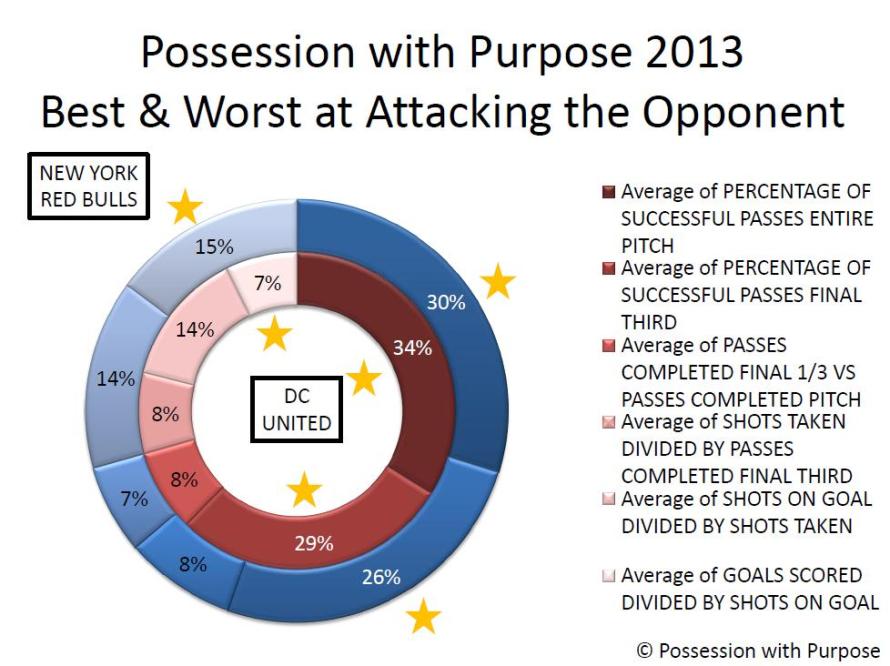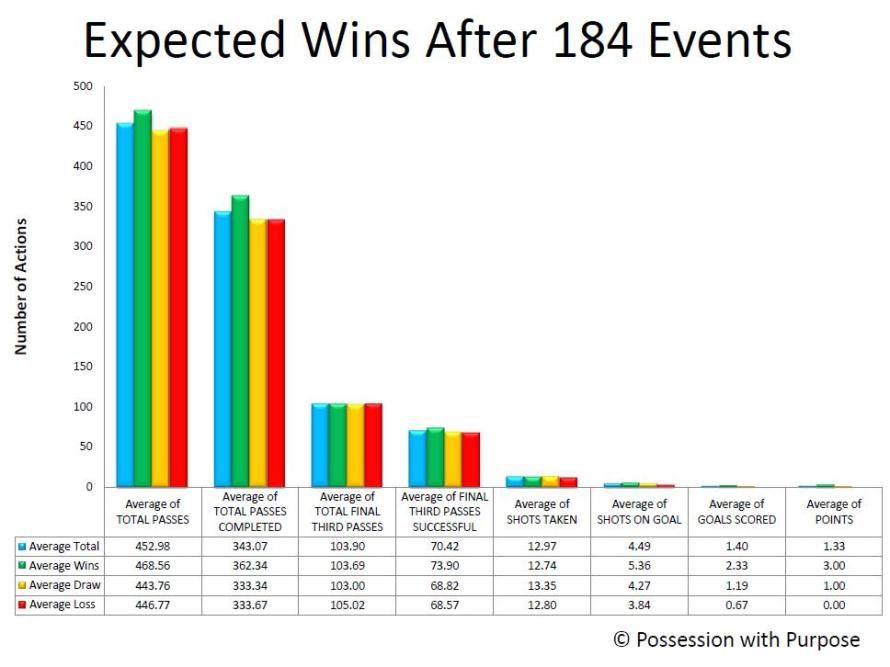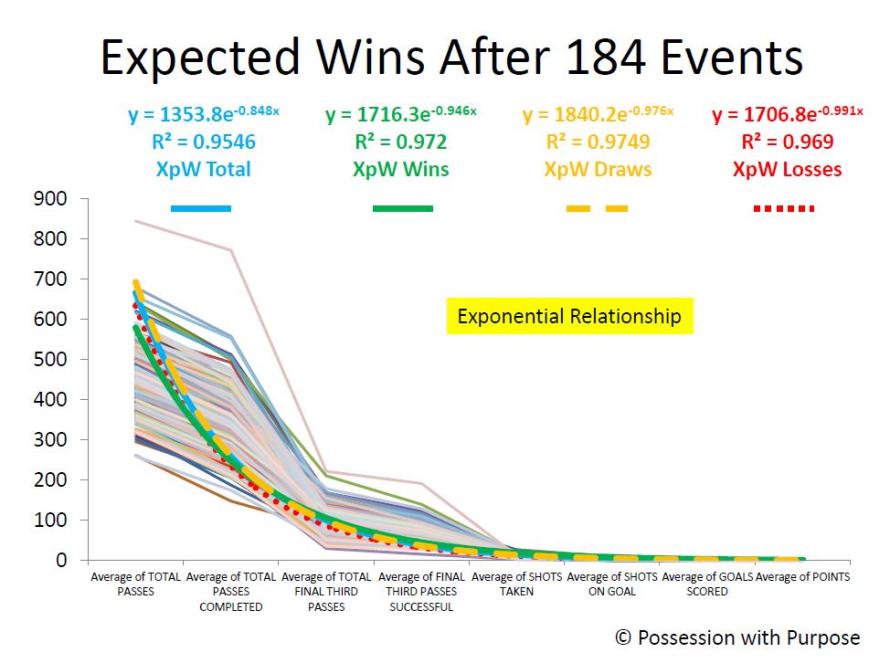I've been terrible with trying to keep up with this quantitative metric, but I figured it wouldn't hurt to throw out an updated version in a vain attempt to try to play catch up with the status quo, being that the league is crawling towards the World Cup break. Really, the point of this exercise is to try and capture how often players are creating shots--not just for themselves, but for teammates. It's still pretty simplistic, and by no means the definitive answer to who the most valuable attackers are, but it's a start in moving away from basing value judgements on goal totals.
To be as clear as possible this is not a metric that measures quality or success of the shot. It's purely about opportunities to score. Either by way of putting mates* in position to score through passes that lead to shots--key passes--or to create a shot by himself--assisted or not--are the ways I count shots created.
*Editor loves word choice.
One thing I did do to include the best available and least luck-influenced player was to set a threshold of 700 minutes played. That limit was arbitrary and selected merely based upon the results of compiling the list. For that reason, and no other, you won't see individuals such as Michael Bradley, Gilberto, Brad Davis, Joao Plata, Marco Di Vaio and Kekuta Manneh on this list even though their shot creation rates merited a position in the top 50. I am very high on both Plata and Manneh, and I would love to see both surpass the 600-minute mark and really fly beyond 2,000 minutes this season so we can see what their stable versions look like.
50-33: The Above Average
RankNameClubPositionMinutesKey PassesAssistsShotsShCShC/90
50Blas PerezDallasFWD8996224323.20
49Nick DeLeonDCMF102612223373.25
48Vincent NogueiraPhiladelphiaMF134817230493.27
47JuninhoLAMF9629323353.27
46Benny FeilhaberKCMF126026317463.29
45Erick TorresChivasFWD11868137463.49
44Jack McInerneryMontrealFWD84411121333.52
43Baggio HusidićLAMF76113116303.55
42Dillion PowersColoradoMF8252139333.60
41Lamar NeagleSeattleMF98710228403.65
40Teal BunburyNEFWD117015330483.69
39Felipe MartinsMontrealMF99615224413.70
38Jairo ArrietaColumbusFWD8189025343.74
37Max UrrutiPortlandFWD7445026313.75
36Justin MappMontrealMF94917419403.79
35Travis IshizakiLAMF73520110313.80
34Andrew WengerPhiladelphiaFWD101211131433.82
33Diego FagundezNEMF10868237473.90
I'll admit there is quite a bit of disparity between Diego Fagundez (#33) and Nick DeLeon (#49). This group does however hold a few names seems that, to my mind, seem to fit together. Blas Perez (#50), Erick Torres (#45), Jack McInerney (#44) and Andrew Wenger (#34) all are viewed a bit differently in terms of success, but, again, this isn't about results-based productivity so much as process-based productivity. We're merely looking at how much they're involved in creating goal scoring chances, regardless of the quality of those chances or where they are located. In that context it makes more sense.
The lone surprise for me in this tier is Justin Mapp. I would have assumed he'd be much higher on this list being that he's been on the few bright spots for Montreal a long with JackMac.
32-10: The Good.
RankNameClubPositionMinutesKey PassesAssistsShotsShCShC/90
32Chris WondolowskiSan JoseFWD8106030364.00
31Obafemi MartinsSeattleFWD124619631564.04
30MichelDallasMF74014218344.14
29Lee NguyenNEMF103224024484.19
28B. Wright-PhillipsNYRBFWD10518041494.20
27Edson BuddleColoradoFWD70710122334.20
26Shea SalinasSan JoseMF9163247434.22
25Sabastian FernandezVancouverFWD65410021314.27
24Will BruinHoustonFWD122120137584.28
23Graham ZusiKCFWD79424311384.31
22Alvaro SaborioReal Salt LakeFWD8695235424.35
21Leonardo FernandezPhiladelphiaFWD70113120344.37
20Giles BarnesHoustonFWD133512251654.38
19Gaston FernandezPortlandFWD75719018374.40
18Mike MageeChicagoFWD7149224354.41
17Harry ShippChicagoFWD89423417444.43
16Marco PappaSeattleMF75112124374.43
15Mauro DiazDallasMF64616214324.46
14Bernando AnorColumbusMF71811025364.51
13Cristian MaidanaPhiladelphiaMF87123220454.65
12Quincy AmarikwaChicagoFWD88015428474.81
11Dom DwyerKCFWD10507050574.89
10Deshorn BrownColoradoFWD9026043494.89
Two other names that are notable here. Edson Buddle (#27)--whom everyone thought was done two years ago when he was traded to Colorado--and Marco Pappa (#16), who was kind of a last minute signing before the start of the season, and who was a serious question mark considering his lack of playing time in the Netherlands. Now both of these individuals that were stamped as likely non-essentials are two of most involved in the creation of their clubs attack. Lee Nguyen (29) coming in higher than Obafemi Martins (31) makes me laugh, simply because Martins is second in the league in assists and most people still hold that to being the truest or, perhaps, the most obvious sign of team goal contributions. Yet Nguyen has been a catalyst for New England and is simply their most valuable player when it comes to finding the ability to create chances. This is the meat and potatoes of the list.
9-4: The Elite.
RankNameClubPositionMinutesKey PassesAssistsShotsShCShC/90
9Javier MoralesReal Salt LakeMF115441521675.23
8Fabian EspindolaDCFWD108630430645.30
7Diego ValeriPortlandMF111728537705.64
6Landon DonovanLAMF80224225515.72
5Thierry HenryNYRBFWD117023449765.85
4Federico HiguainColumbusFWD108039527715.92
So there that is. There shouldn't be any argument here with any of these names. Fabian Espindola (#8) is the sole reason DC even has a shot at the playoffs. He is going to get every opportunity to be 'the man' in black and red. Landon Donovan (#6) despite his uncanny snubbery from the US National Team is still clearly a major factor for the Galaxy and their attack. Sticking with the theme of decline in skills, Thierry Henry (#5) is still one of the greatest to ever play in MLS.
Oh, and I'm just biding my time for Higuian to get past this "slump" and jet into the MVP Candidate category... because that's simply where he belongs. More on that down the road.
3-1: The MVP Candidates.
RankNameClubPositionMinutesKey PassesAssistsShotsShCShC/90
3Robbie KeaneLAFWD99019245666.00
2Clint DempseySeattleMF75114243597.07
1Pedro MoralesWhitecapsMF82131438738.00
Clint Dempsey (#2) has had the kind of year that is simply bananas. It's been so crazy that it's somehow eclipsed the Pedro Morales (#1) show that is going on just a few short hours north of him. Sure, these guys take penalty kicks, but that's only a small fraction of their shots generated. If these two take this same show into the later stages of the season I can't think there would be much reason to consider anyone else for MVP.
Oh, I guess you could probably throw Robbie Keane's (#3) name in that list, too. People forget about ol' faithful, but even without his P.I.C. (read: 'Partner in Crime' for those that aren't as hip as I am) for a game or two here and there, he's still been incredible. Currently he ranks third in individual expected goals, proving that he also finds dangerous places to take his shots and doesn't hesitate to pull the trigger. Oh, and despite the angry looks and words AND finger wags, he gets his teammates those same opportunities.
And here's the Excel File for the top 50.










